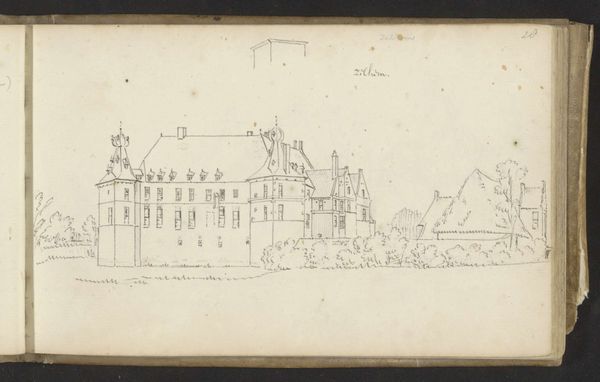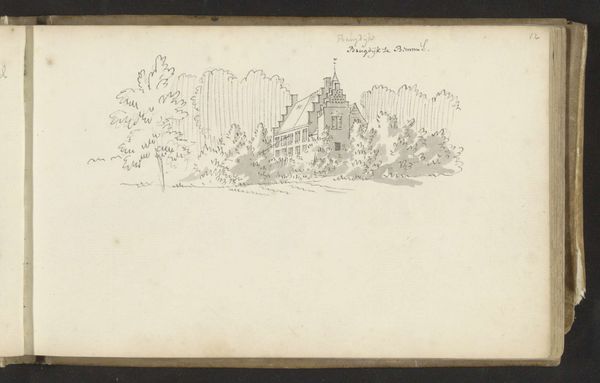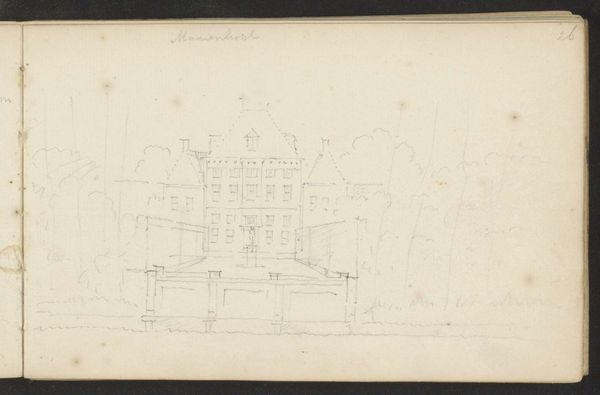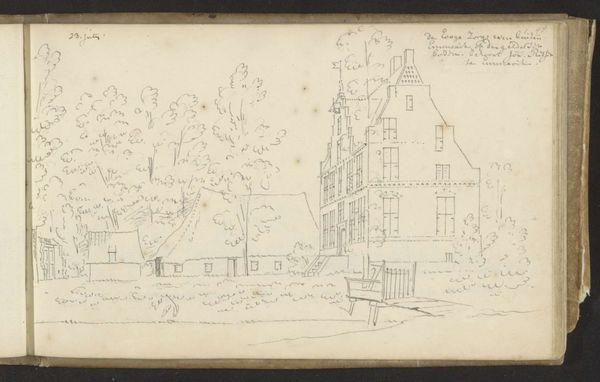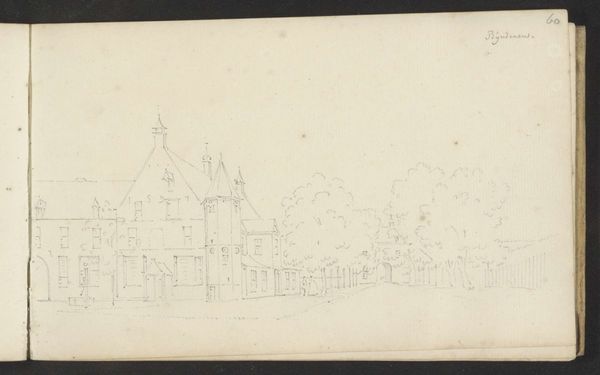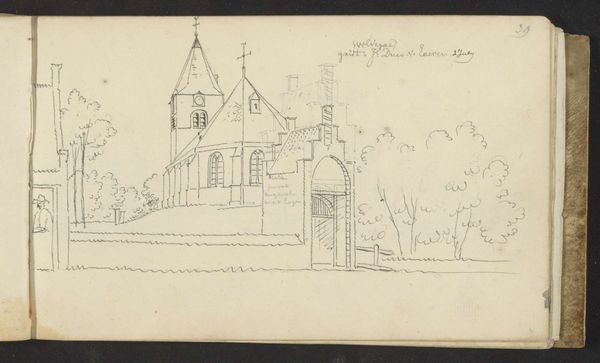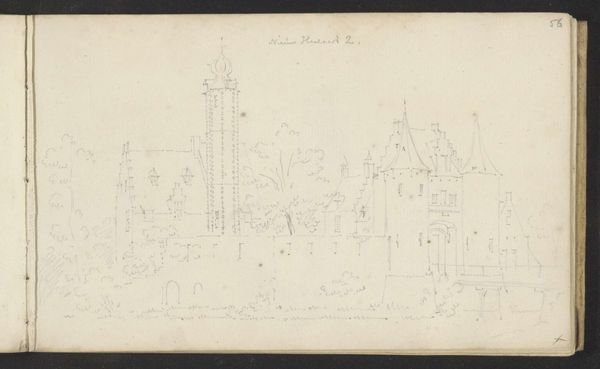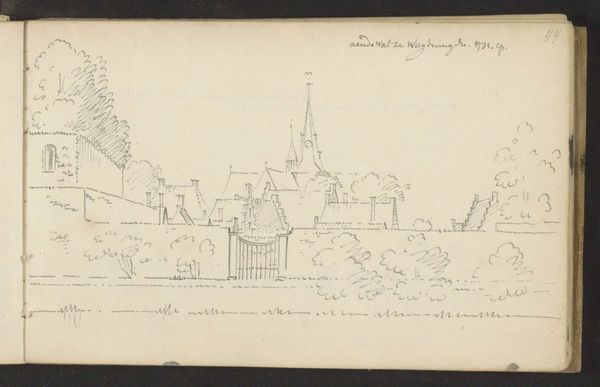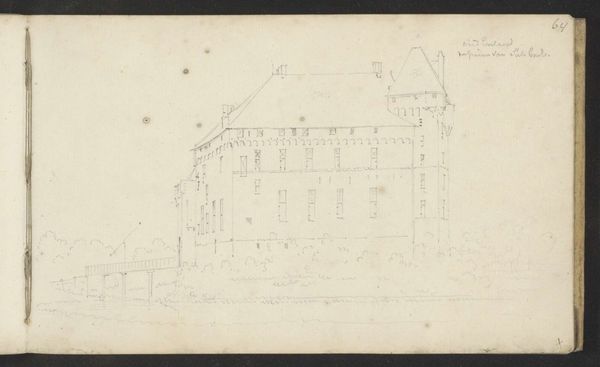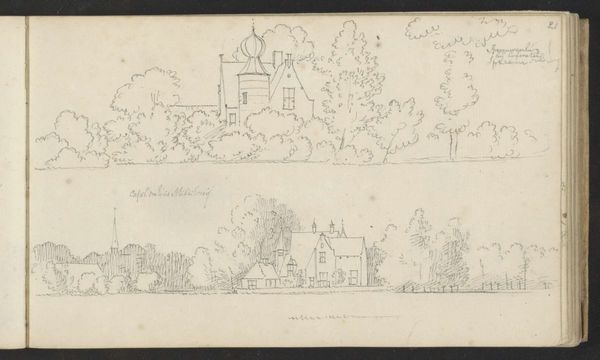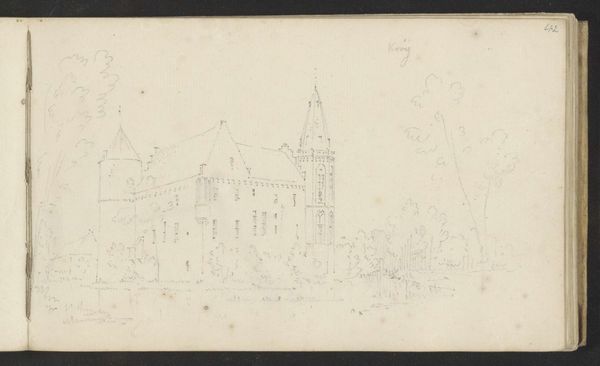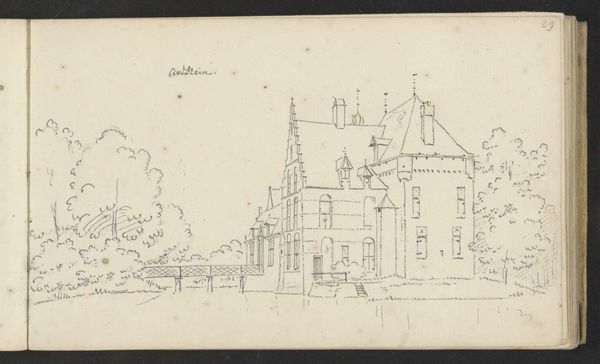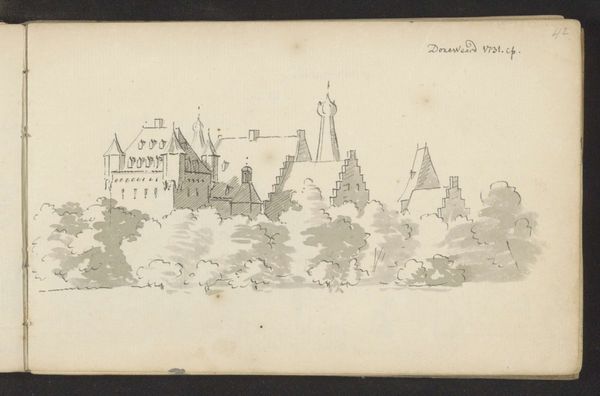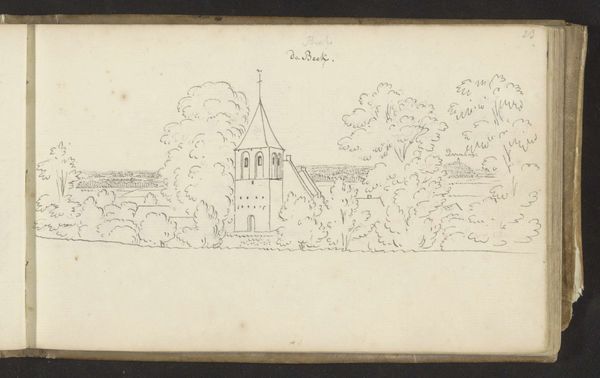
drawing, ink, pen, architecture
#
drawing
#
aged paper
#
dutch-golden-age
#
sketch book
#
hand drawn type
#
landscape
#
personal sketchbook
#
ink
#
sketchwork
#
pen-ink sketch
#
pen work
#
sketchbook drawing
#
pen
#
genre-painting
#
storyboard and sketchbook work
#
sketchbook art
#
architecture
#
realism
Copyright: Rijks Museum: Open Domain
Here is a pen drawing by Abraham de Haen the Younger, showing the Huis van ritmeester van Benthem te Havelte. Look at this house, framed by trees and a modest fence, a common motif throughout art history representing domesticity and enclosure. The fence, in particular, appears in various forms across cultures, from ancient Roman villas to modern suburban homes. Consider how the fence, initially a symbol of protection and privacy, has evolved into a signifier of social status and personal identity. Notice how the trees soften the rigid geometry of the house, creating a sense of harmony between nature and architecture. These elements remind us of our deep-seated psychological need for both shelter and connection to the natural world. This balance is not just a matter of aesthetics but reflects our subconscious desires for security and freedom. Think about how these symbols resonate with our collective memory. How do these elements speak to our innate longing for home and belonging, a theme that continues to resurface, evolve, and find new meanings in our ever-changing world?
Comments
No comments
Be the first to comment and join the conversation on the ultimate creative platform.
